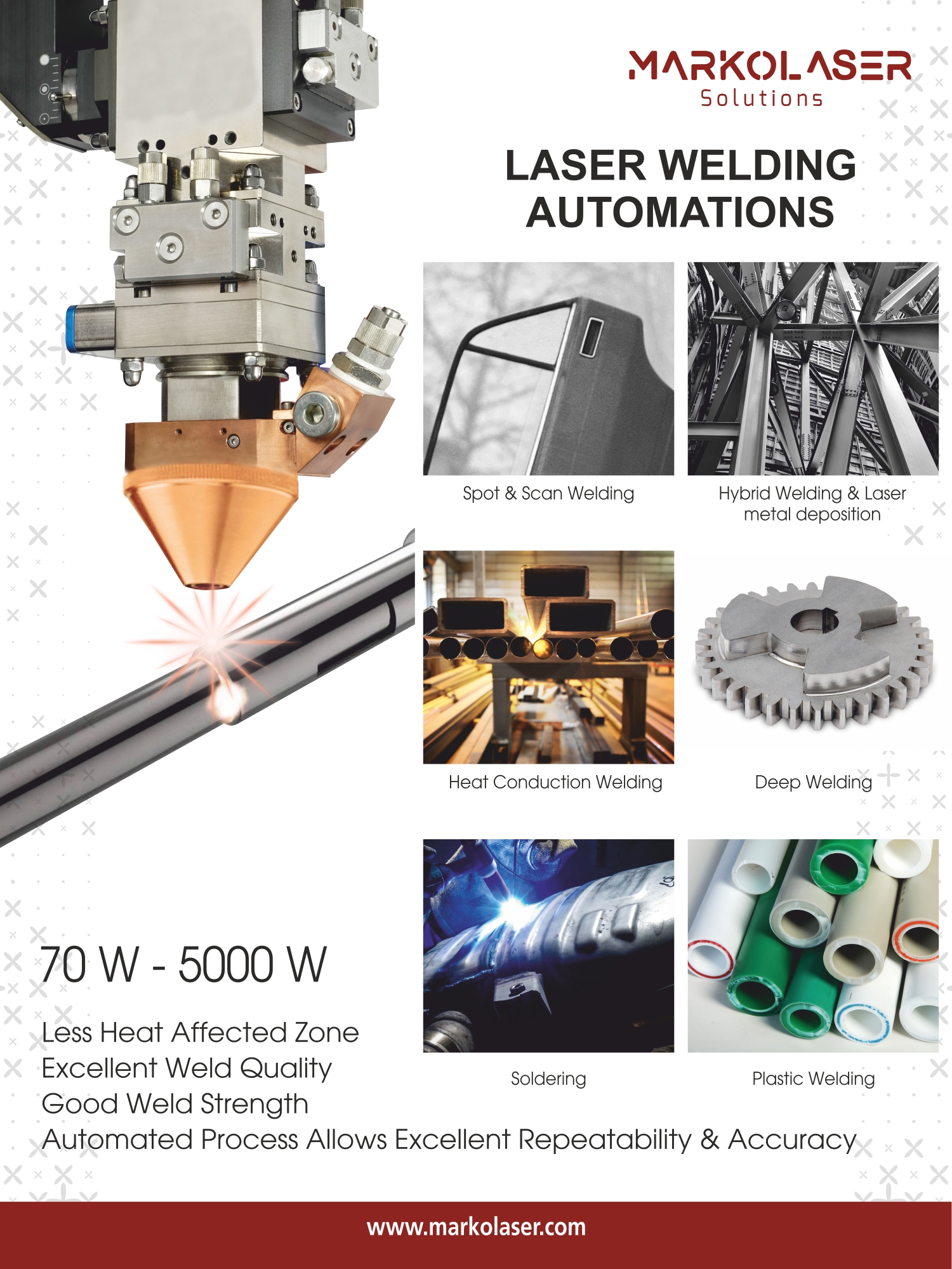- Have any questions?
- +91 9210626626
- info@markolaser.com
Laser Welding & Laser beam welding

Laser beam welding is a type of manufacturing process that uses a laser beam to fuse materials. The main characteristics of laser beam welding are that it produces heat when it strikes the surface, and the beam has high energy content and low divergence.
Laser Source for Welding:
Mainly, gas laser (Co2), solid state laser (Nd: YAG and ruby lasers) and Fiber laser are used in welding.
Characteristics of Laser Beam Welding include the following:
- The power density of a laser beam is high, and it is of the order 1 MW/cm2. Due to its high power density it has small heat-affected zones. So, the rate of heating and cooling is high.
- Pulsed or continuous laser beams are used for welding.
- Laser welding is a versatile process since it is capable of welding different types of materials like carbon steels, stainless steel, HSLA Steels, aluminum and titanium.
- It produces high quality weld.
- Laser welding is easily accessible since the beams can be focused, aligned and directed by optical elements.
- Laser beam can be focused on a small area, permitting the joining of small, closely spaced components with tiny welds.
- Due to high laser penetration power it’s aspect ratios (i.e., depth-to-width ratios) is high i.e. 10:1.
Application of Laser beam welding:
LBW's application range is wide and covers a wide range of industries. It offers the finest, non-porous welding for medical technology and precision spot welding for electronics or the jewellery industry. Deposit welding for tool and mould-making and welding complete car bodies during auto mobile construction are all handled by LBW.
- Laser Brazing: Brazing is a joining process that uses a filler metal or alloy to melt at temperatures above 450°C.
- Laser Soldering: During the soldering process, the filler metal or alloy is heated up-to melting temperatures less than 450°C. So, generally laser output power less than 100 watt is required for melting the filler material
- Laser Plastic Welding: Diode lasers are the ideal choice for plastic welding with different wavelengths ranging from 808 to 1470 nm
- Spot and seam welding: Seam welding is a variation of spot welding. In laser seam welding, the part to be welded is moved or rotated under the focus head allowing laser spot welds to overlap.
